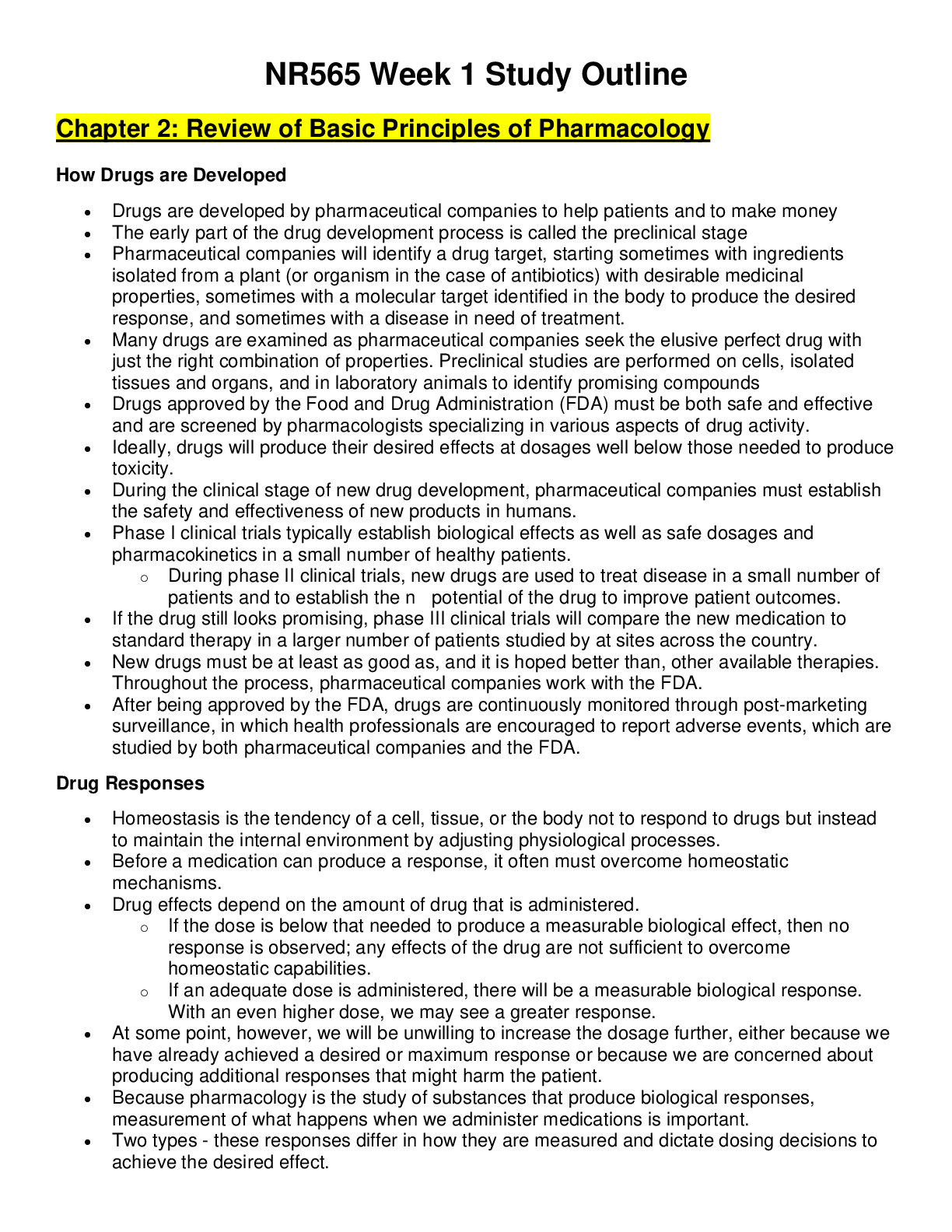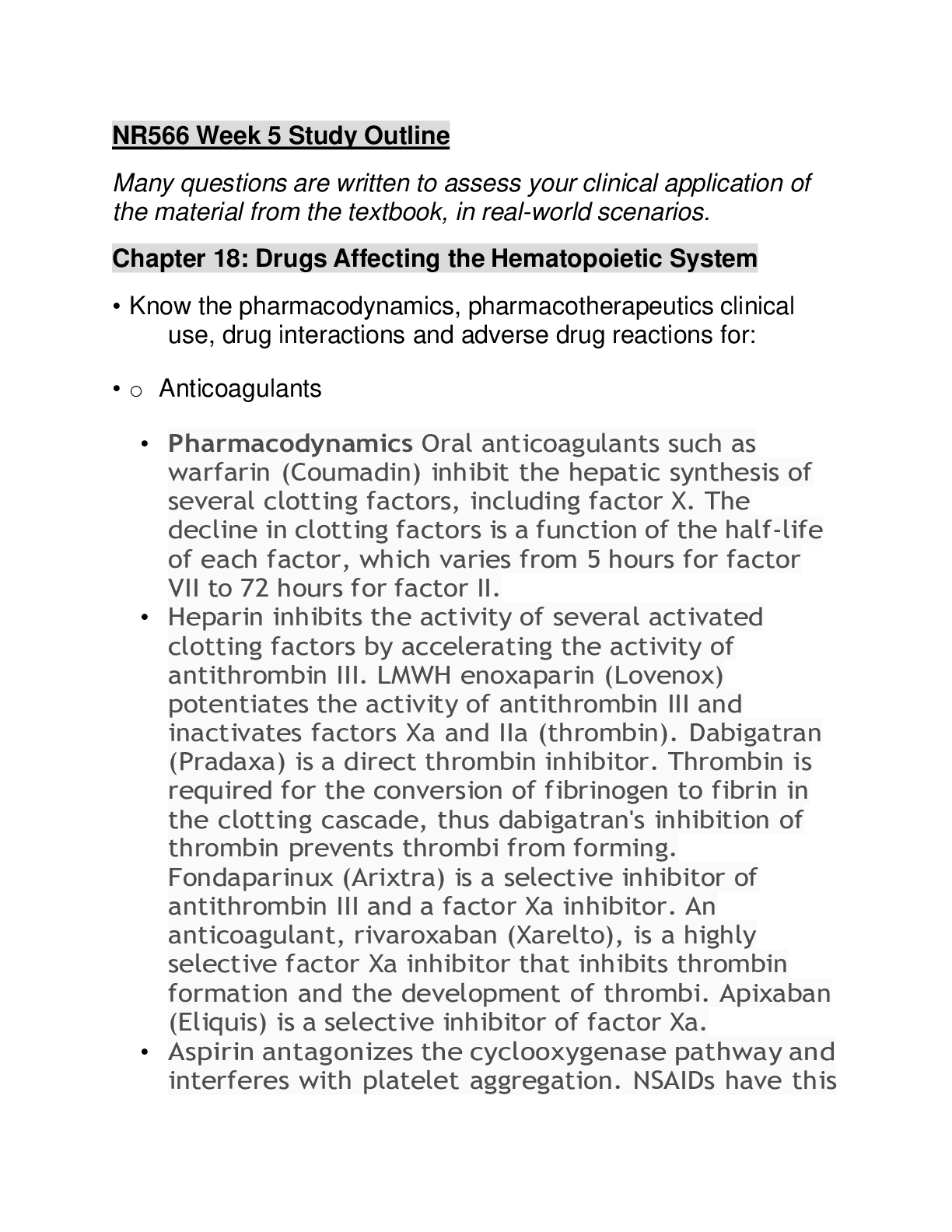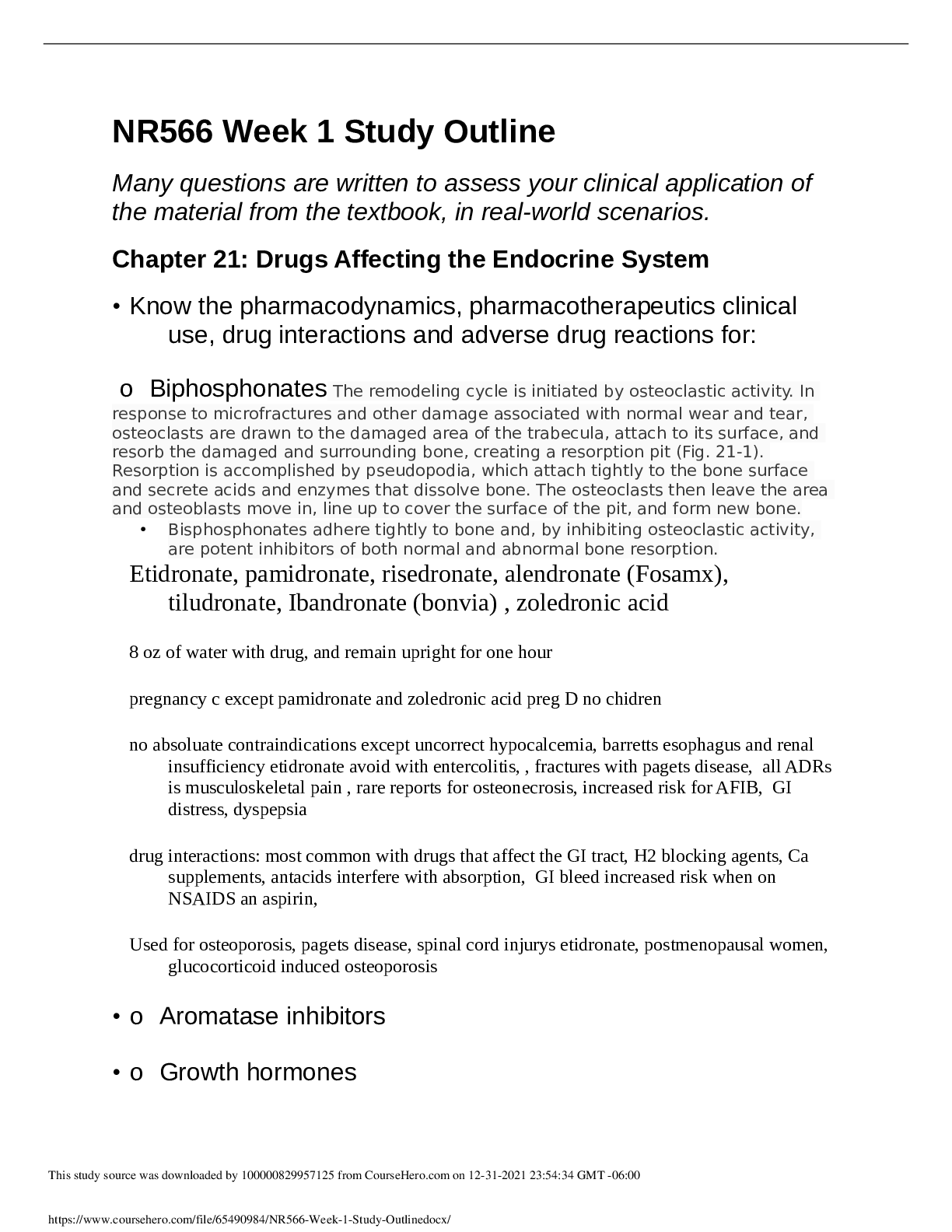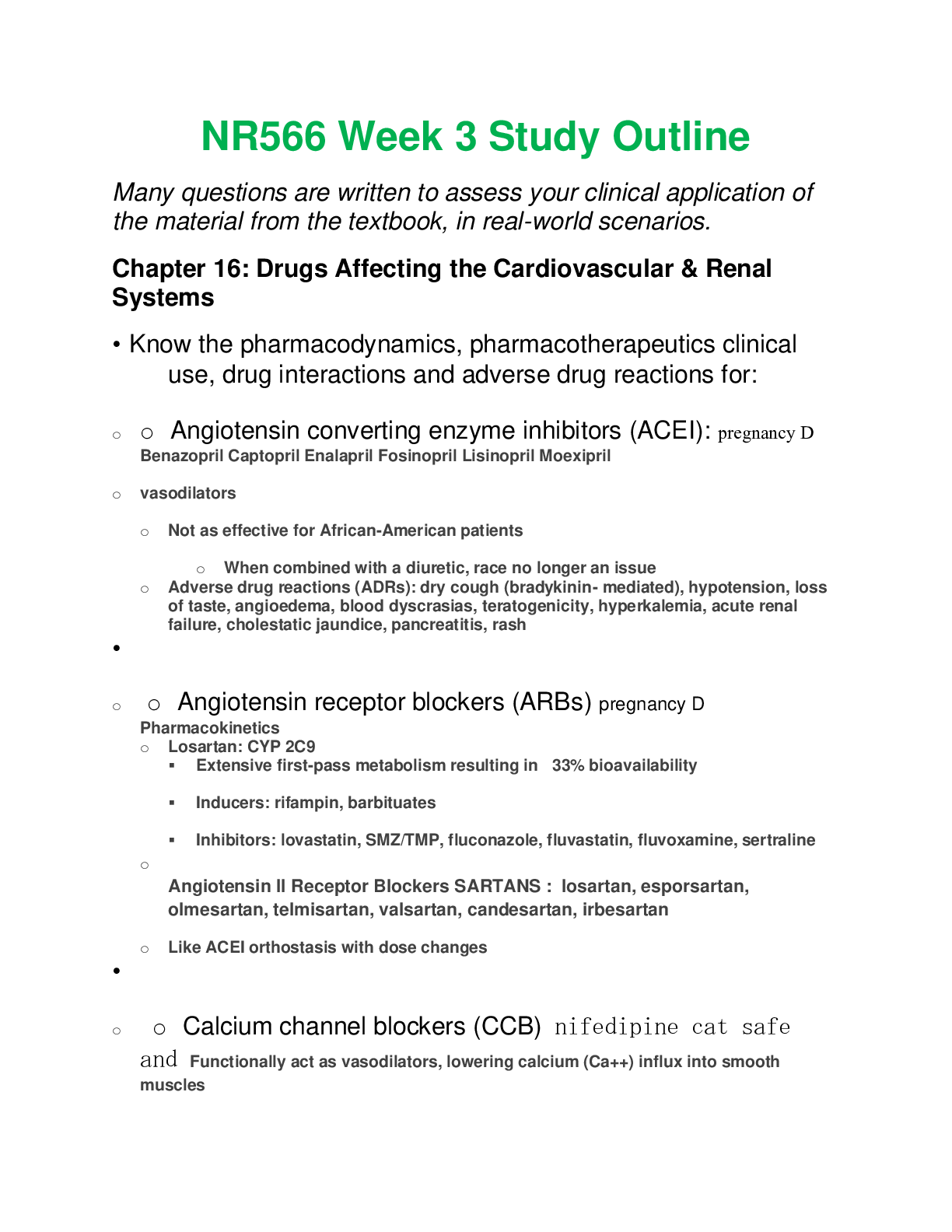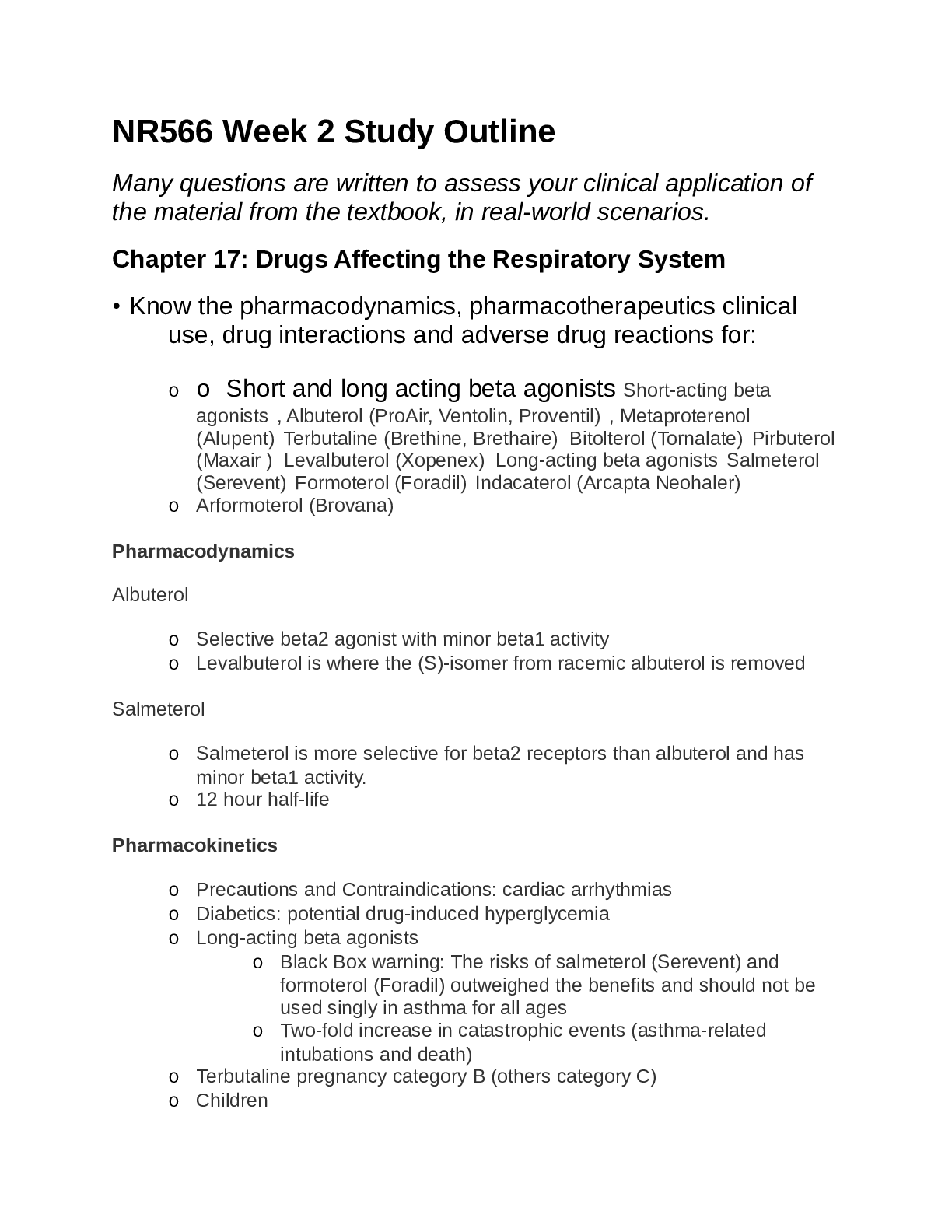*NURSING > Class Notes > NR565 Week 5 Study Outline (All)
NR565 Week 5 Study Outline
Document Content and Description Below
NR565 Week 5 Study Outline :Many questions are written to assess your clinical application of the material from the textbook, in real-world scenarios. Chapter 24: Drugs used in treating infectious... diseases (p. 692-760) Know the following for each drug class Cephalosporins Cephalosporins are beta-lactam antibiotics, structurally and chemically related to the penicillins • Spectrum of coverage for various organisms • Pharmacodynamics Cephalosporins inhibit mucopeptide synthesis in the bacterial cell wall, making the bacterium osmotically unstable. bactericidal, First-generation cephalosporins are active against gram-positive cocci, including S. aureus and S. epidermidis (excluding methicillin-resistant strains), and most streptococci Examples of second-generation cephalosporins include cefaclor, cefprozil, and cefuroxime. These are active against the same organisms as the first generation but with increased activity against H. influenzae. The cephamycins include cefotetan and cefoxitin. Third-generation cephalosporins have activity against streptococcal species, Streptococcus pneumoniae, MSSA, H. influenzae (including beta-lactamase producing strains), Moraxella, N. gonorrhoeae, N. meningitidis, E. coli, Klebsiella, Proteus, and Salmonella. cefdinir and cefpodoxime have the best gram-positive activity. Parenteral third-generation cephalosporins available in the United States include cefotaxime, ceftazidime, and ceftriaxone. The fourth-generation cephalosporin, cefepime (Maxipime), has a broader spectrum of activity and is more resistant to beta-lactamases • Pharmacokinetics All cephalosporins are widely distributed to most tissues and fluids. irst- and second-generation drugs do not readily enter the CSF, even when the meninges are inflamed. Third- and fourth-generation drugs and cefuroxime readily enter the CSF in the presence of meningeal inflammation. hepatic metabolism is not significant for cephalosporin drug elimination. Most cephalosporins are excreted via the kidney in varying degrees as unchanged drug • Pharmacotherapeutics cephalosporins may produce hypersensitivity reactions in a small percentage of patients. Cephalosporins are generally not recommended for those who have had a type 1 (immediate, anaphylactic) reaction to any penicillin. Skin testing is not helpful for identifying individuals likely to experience anaphylactic reactions to cephalosporins. [Show More]
Last updated: 2 years ago
Preview 1 out of 15 pages
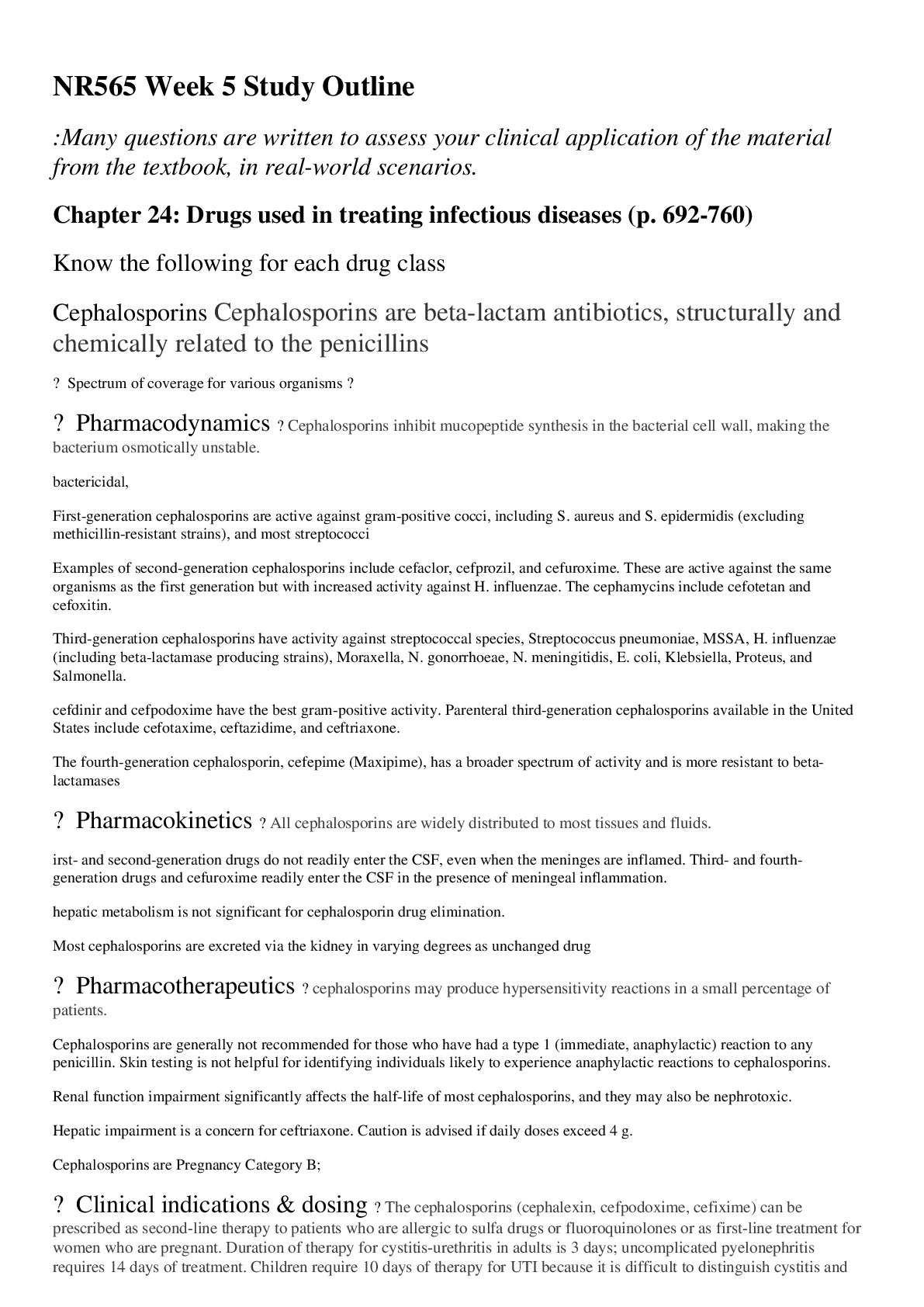
Buy this document to get the full access instantly
Instant Download Access after purchase
Buy NowInstant download
We Accept:

Reviews( 0 )
$9.50
Can't find what you want? Try our AI powered Search
Document information
Connected school, study & course
About the document
Uploaded On
Nov 20, 2020
Number of pages
15
Written in
Additional information
This document has been written for:
Uploaded
Nov 20, 2020
Downloads
0
Views
88

